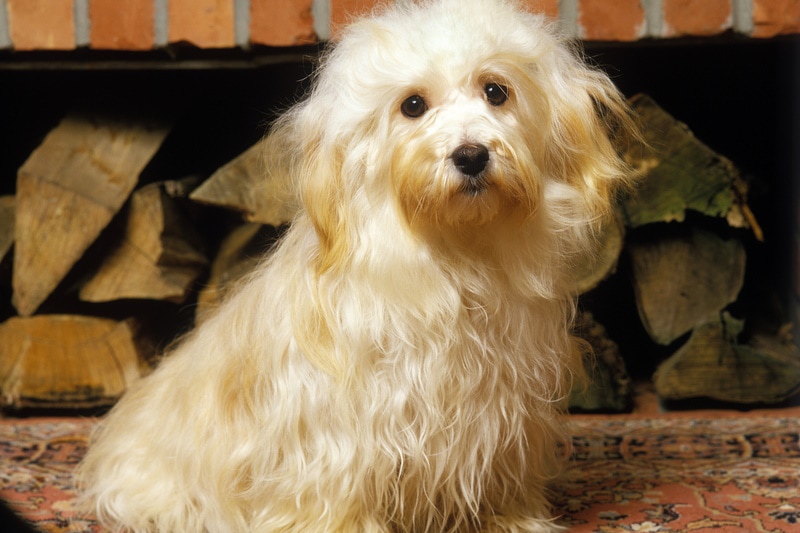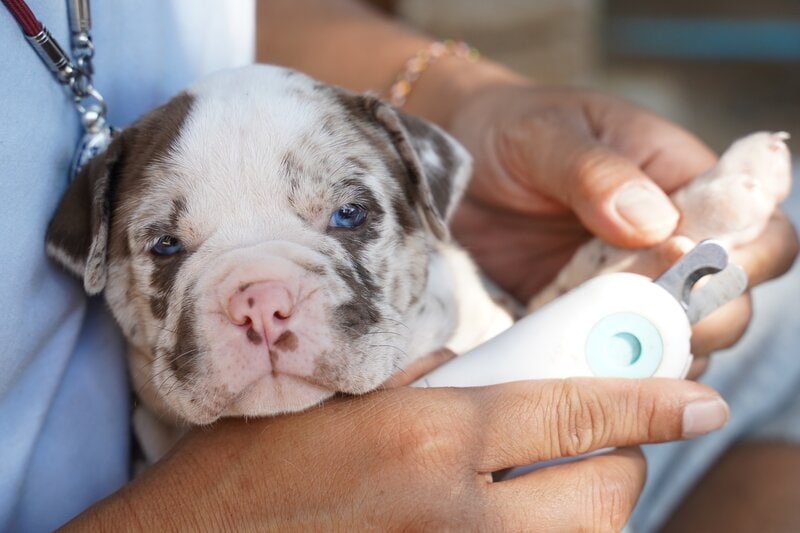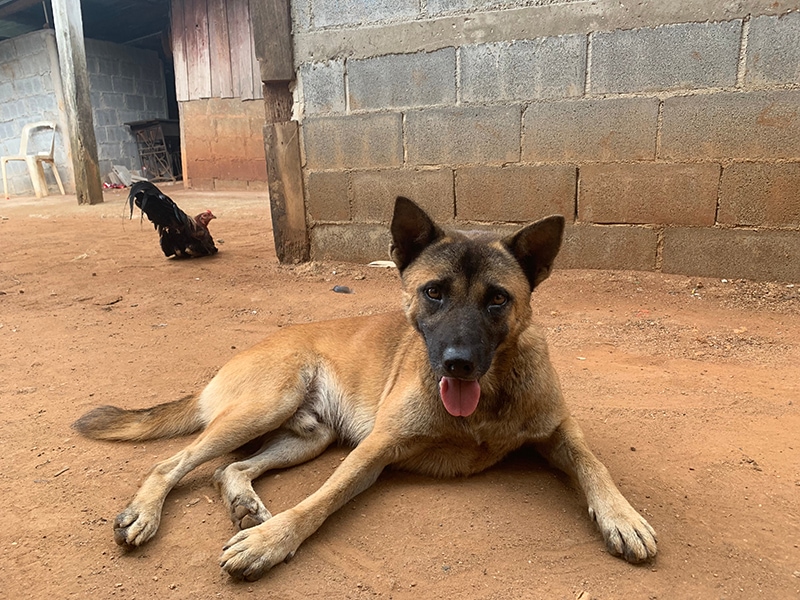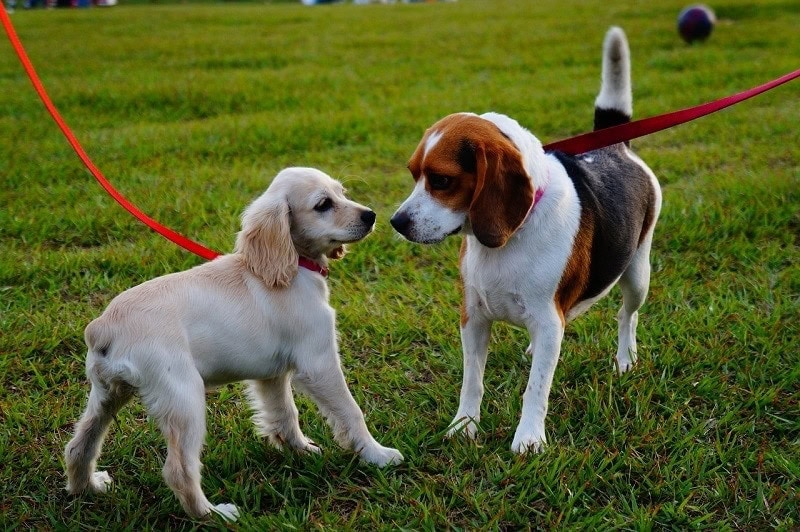Havana Silk Dog: Guide, Pictures, Temperament & Traits

Updated on

One of the most interesting dog breeds is the Havana Silk Dog. Despite their adorable appearance, they aren’t recognized as an official breed and are often mistaken for the more well-known Havanese. Despite the confusion surrounding them, though, the Havana Silk Dog is an energetic, playful, and wonderful companion.
This guide introduces you to these rare dogs, so you can decide whether they should be considered a variation of the Havanese or be recognized as their own breed.
| Height: | 9 – 11 inches |
| Weight: | 8 – 13 pounds |
| Lifespan: | 10 – 15 years |
| Colors: | Pied, black, brown, gray, cream, and white |
| Suitable for: | Active families, families with children, multi-pet households, houses with a yard or apartments, and single people |
| Temperament: | Sweet, friendly, social, active, intelligent, eager to please |
Part of the confusion surrounding the Havana Silk Dog is that they are descended solely from the Havanese. They started as a variation, with longer, silkier fur and sturdier bodies. The breed was inspired by the original “silk” dogs in Cuba during the 18th century and was reinvented for modern dog lovers.
These days, the breed is adored by families, singles, and seniors for their companionship and sensitivity. They adore cuddles just as much as they love following you around or learning new tricks. They’re also incredibly adaptable and intelligent, which makes them well-suited for obedience, agility, and shows.
Havana Silk Dog Breed Characteristics
Havana Silk Dog Breed Puppies – Before You Get One …
The Havana Silk Dog can be difficult to find, and due to how often they are confused with the Havanese, you might find yourself with the more popular dog breed rather than a Havana Silk Dog, especially if you visit a less-reputable breeder.
There are breeders of Havana Silk Dogs around, but it may take a bit of time and dedicated research on your part to find one in your area. You also need to make sure the breeder is registered with the Havana Silk Dog Association of America, a club that ensures the breeders hold their dogs to a healthy standard.
You need to make sure you socialize your new dog from an early age. Havana Silk Dogs are friendly no matter how old they are, but introducing them to a wide variety of people and animals will help them adjust to meeting strangers. It can also help prevent them from becoming timid in new situations.
Temperament & Intelligence of the Havana Silk Dog 🧠
Descended from the Havanese, the Havana Silk Dog is just as friendly as their ancestors. They share the same loyal, social nature and a love for playing and being the center of attention. They’re also incredibly intelligent, and their eager-to-please nature makes them easy to train, especially for new dog owners.
However, they don’t like to be left alone for too long. Since they are highly sociable creatures, they love to be around their companions the most, going as far as to follow you from room to room.
If you spend a significant amount of time outside the house, remember to break up your day with a visit home or hire a pet sitter to keep your Havana Silk Dog happy. They can develop separation anxiety and destructive behavior if they feel lonely or anxious.
Are These Dogs Good for Families? 🏡
Many small dogs aren’t recommended for children due to their size and how easy it is to injure them. The Havana Silk Dog might be small, but they are hardier than many other small breeds. While children should still respect these dogs and be taught how to play with them properly, the Havana Silk Dog is suitable for families with young children, as well as seniors and single people.
Does This Breed Get Along With Other Pets? 🐶 😽

Humans aren’t the only companions that the Havana Silk Dog adores; they also get along brilliantly with other animals. Although they might bark at critters scurrying about in the yard outside the window, they do well with other dogs. As long as you begin socializing them as early as possible, these dogs can also get along well with cats.
Things to Know When Owning a Havana Silk Dog
All dog breeds have different needs when it comes to food, exercise, training, health, and grooming. The Havana Silk Dog might not be an official breed to kennel clubs like the AKC, but they still deserve to be taken care of properly. They are also quite different from the Havanese, and their grooming needs, exercise requirements, and health can vary.
Food & Diet Requirements 🦴
One of the best parts of owning a small dog breed is they don’t eat nearly as much as large dogs. The Havana Silk Dog only needs about 1 cup of food a day, spread out between two meals. Make sure the food that you buy is high quality and formulated for small breeds to ensure that your dog gets all the nutrition that they need.
They do well with treats as rewards for good behavior and during training. Make sure the treats never become the main part of your dog’s diet, though—less than 10% is best—to ensure that your Havana Silk Dog continues to benefit from balanced meals and isn’t at risk of becoming overweight.
Exercise 🐕
The Havana Silk Dog is incredibly energetic for such a small breed. Despite their playfulness, though, they don’t require much activity to keep them out of trouble. They do require at least one walk a day and plenty of playtime with their family members. Most of their energy can be expended by their dedication to following you around the house, especially while you’re doing chores.
Due to their size and how easy they are to keep entertained, they are well suited for apartment life but also do well in a house with a yard. They’re also energetic enough for agility courses if you’re willing to put in the time to train them.
Training 🦮
Small they might be, but the Havana Silk Dog is highly intelligent. They are good at obedience and quickly get the hang of agility course obstacles. They’re sensitive, adaptable, and eager to please, which makes training them relatively simple, even if you don’t have much experience with dog training.
Positive reinforcement works best, whether it’s treats, playtime, or plenty of praise and attention. Avoid yelling when they get something wrong, and instead, take a step back. The Havana Silk Dog can easily get disenchanted if they feel that they’ve upset you, and they prefer fun training sessions over negativity.
Grooming ✂️
Despite the appearance of their long, silky coat, the Havana Silk Dog doesn’t require much grooming maintenance. A quick daily brushing session will be more than enough to remove the tangles in their long fur and prevent matting. Pin, slicker, and de-shedding brushes are the best tools to use on your Havana Silk Dog’s fur.
Remember to set aside time for a long grooming session too. You need to clean the fur on their face, check their ears and teeth, and maintain their claws. Their fondness for being the center of your attention also makes them fond of dedicated grooming sessions, and they’ll adore an evening filled with pampering.
Health and Conditions ❤️
Although the Havana Silk Dog is descended from the Havanese, they don’t share many of the same health issues. They were bred to be hardier and healthier. Generally, they are healthy enough to live well into their teen years, and the few breeders registered with the Havana Silk Dog Association are expected to screen for health issues. The most common problems facing this breed are joint, eye, and heart conditions.
- Deafness
- Patella luxation
- Hip dysplasia
- Eye problems
Male vs. Female
There aren’t many differences between male and female Havana Silk Dogs. All members of the breed share the same friendly nature and activity levels, though some individuals may be more outgoing or active than others.
Male dogs do tend to be the more energetic and affectionate of the two sexes, but this doesn’t mean your female Havana Silk Dog hates you. They’re just happier spending time by themselves, though they can suffer from separation anxiety if they’re left alone for too long. Your female dog is also more likely to be easier to train at an earlier age, as they tend to mature faster than male dogs; that said, they can be more stubborn too.
To decide between a male or female Havana Silk Dog, get to know the puppies before you make your final decision. By spending at least 20 minutes playing with your potential family members, you’ll be better able to tell whether their personality matches yours.
3 Little-Known Facts About the Havana Silk Dog
Due to their rarity, there isn’t much information about the Havana Silk Dog. They’re also often considered to be the same as the Havanese, which doesn’t help introduce the breed to new dog lovers.
Here are three facts about the Havana Silk Dog that prove that these dogs aren’t the same as the Havanese and deserve to be recognized too!
1. They Are Often Confused With the Havanese
Even if you hadn’t heard of the Havana Silk Dog before, you would probably assume that they had a link to the Havanese. The Havana Silk Dogs that we know today are descended from the Havanese; they are a hardier version of the breed, with a slightly longer muzzle, smaller ears, and a broader nose. The biggest difference between the two is the silkier fur of the Havana Silk Dog, hence the name.
Despite having such a different appearance compared to the Havanese, the Havana Silk Dog isn’t recognized by any breed registries. While there is a Havana Silk Dog Association of America that was founded in 2007, there haven’t been many attempts to get the breed recognized officially. The AKC, for example, classes the Havana Silk Dog as a Havanese.
Due to this, there’s a great deal of confusion about whether the Havana Silk Dog is a new breed entirely or a variation of the more familiar Havanese.
2. They Are a Reinvented Breed
The Havana Silk Dogs that we know today have only been around since the early 2000s, but they’re not the first silk dogs. In Europe during the 17th and 18th centuries, the nobility was fond of small companion dogs. One was a silk dog that was thought to have been introduced to Europe by Columbus during his travels. These dogs date back to the pre-Columbian Caribbean.
Their silky fur and friendly nature made them popular among the nobility, but the original silk dogs were lost to time somewhere between the 18th and 20th centuries. It wasn’t until the 1960s that efforts were made to breed a new silk dog, but they didn’t earn the name Havana Silk Dog until 2007, when the breed club was formed.
3. They Are the Source of Much Contention
Usually, when a new dog breed or a variation of an existing breed is introduced, many people adore the new arrivals. However, the Havana Silk Dog has been the source of a great deal of discussion and contention between many breed fanatics. While many people consider them a continuation of the original 18th-century Cuban silk dogs, others refuse to class them as the same breed.
Many Havanese breed lovers also dislike how the Havana Silk Dog is often considered to be a Havanese, even by kennel clubs like the AKC. The fact that the Havana Silk Dog is so different in appearance yet is still classed as the same breed is a source of frustration for many breed advocates.
Final Thoughts
Long-lived, friendly, and adorable, the Havana Silk Dog is regularly confused for the more popular Havanese. Even the AKC considers them to be a variation of the Havanese, and the lack of recognition for the Havana Silk Dog as a breed of their own makes it difficult to find information about them. However, many breed fanatics prefer to view them as their own breed, and there is a club dedicated to maintaining the standard for these dogs.
Having descended from the Havanese, the Havana Silk Dog does share many of the same traits. Their energy, friendliness, and Velcro-like natures are all inherited from their ancestors. However, they were bred to be much hardier than the fragile Havanese in their physical condition and regarding their health.
These dogs suit young families, singles, and seniors, as well as multi-pet homes, apartments, and houses with a yard. They love to be around people most of all, so you should never leave them alone for too long. Above all else, they love to know that they’ve made you happy, so do your best with plenty of positive reinforcement and cuddles.
See also:
Featured Image Credit: slowmotiongli, Shutterstock













